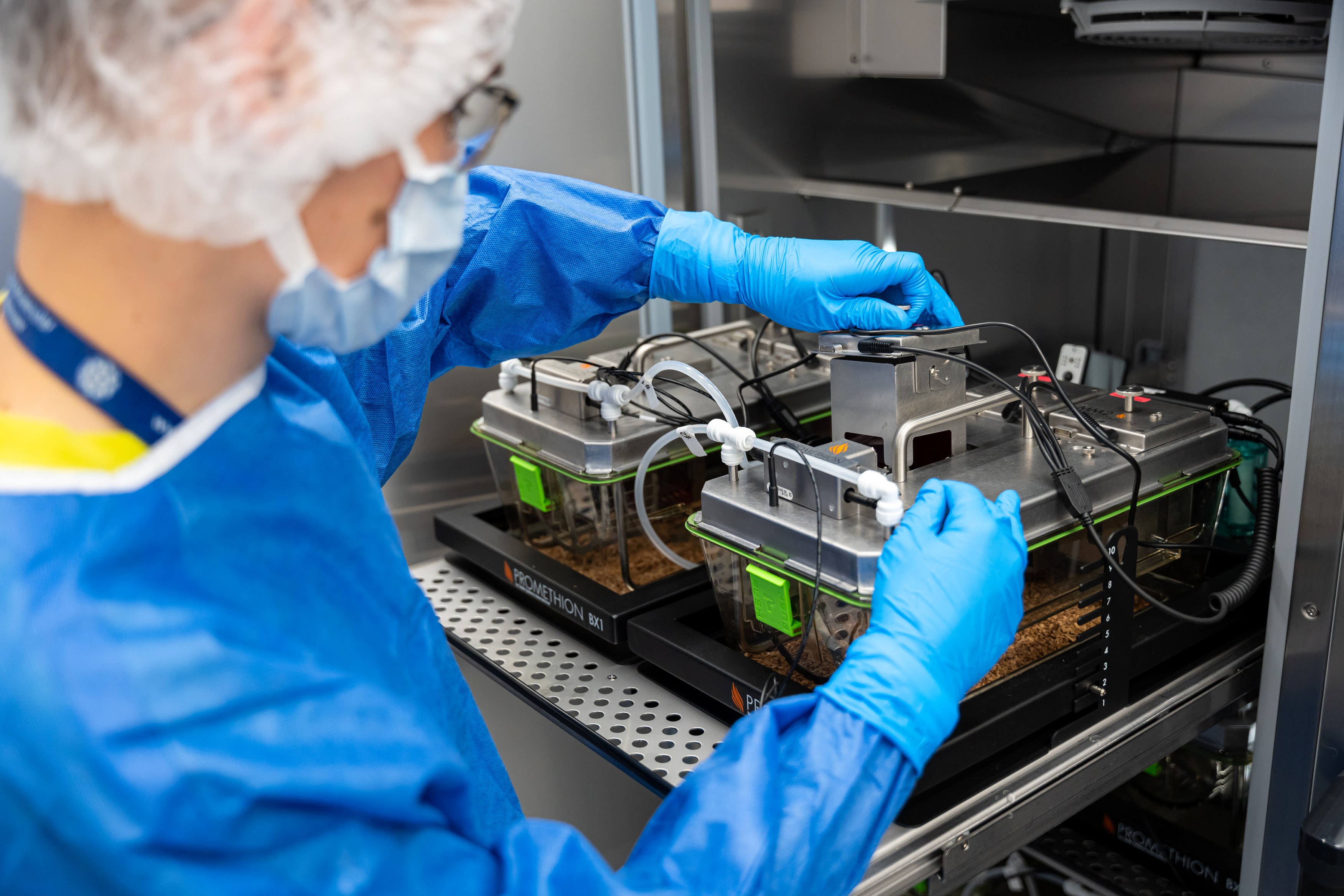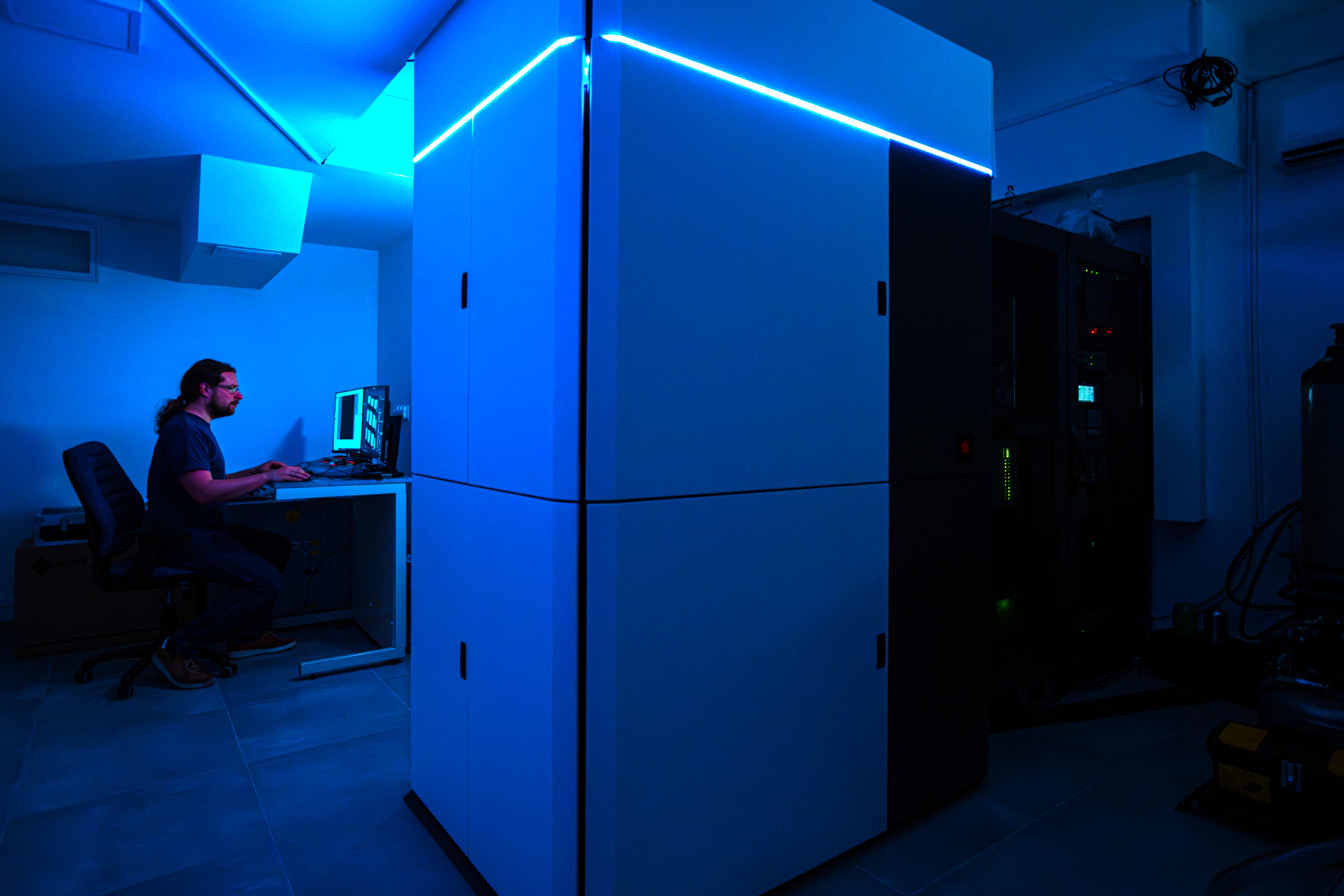IN-MOL-CELL as an Investment in the Future – Poland’s First Integrated Infrastructure for Biomedical Research IN MOL CELL INMOLCELL
The International Institute of Molecular and Cell Biology in Warsaw (IIMCB) has launched IN-MOL-CELL – an integrated, comprehensive research infrastructure. Co-funded by Poland’s National Recovery and Resilience Plan, this investment has already contributed significantly to research that advanced our understanding of mRNA-based therapies. These efforts were recognized by the international scientific community and resulted in a publication in Nature.
Scientists and the biomedical industry worldwide rely on specialized service units known as Core Facilities (CFs). These advanced, integrated infrastructures are equipped with unique technical expertise and high-end instruments that support cutting-edge biomedical research. A global trend is the expansion and professionalization of such resources, enabling increasingly complex projects across disciplines such as biology, physics, chemistry, and computer science.
The IN-MOL-CELL infrastructure, created by IIMCB, addresses the needs of Poland’s biotechnology and biomedical sectors by providing access to state-of-the-art research technologies. The project was inspired by leading European models, including the European Molecular Biology Laboratory and Belgium’s VIB.
IN-MOL-CELL will ultimately comprise 10 specialized Core Facilities offering technologies that are, in many cases, unique in Poland – including the country’s first mass photometer and advanced gene engineering methods for generating animal models of human diseases. Its development is supported by both EU and national funding. IIMCB is a a beneficiary of the RACE Teaming for Excellence program focused on operational capacity building, and of the complementary RACE-PRIME program targeting scientific research. The infrastructure also benefits from Poland’s Recovery and Resilience Plan (KPO), which provides for the purchase of new equipment and the training of specialized personnel.
 The metabolic platform allows the monitoring of vital parameters of mice from their living cages. Photo: IIMCB
The metabolic platform allows the monitoring of vital parameters of mice from their living cages. Photo: IIMCB
IN-MOL-CELL – KEY FACTS
Scale: 10 specialized Core Facilities (7 operational, 3 under development), offering capabilities that are largely unique in Poland.
Expertise: A team of highly qualified scientists providing access to a wide array of cutting-edge technologies. IN-MOL-CELL includes Poland’s only facility generating transgenic animal models, a broad range of biophysical methods including the country’s first mass photometer, and pioneering correlative microscopy techniques.
Versatility: Comprehensive support ranging from bioinformatics and genome engineering to preclinical drug development. Multi-platform services tailored to translational and preclinical research needs.
Synergy: An open collaboration model with academic institutions, non-profit organizations, and companies in the biotech and pharmaceutical sectors.
Impact: A critical role in delivering Poland’s only ERC Advanced Grant in the biomedical field and in conducting the experiments that underpinned the Nature publication.
Supporting Science and Industry
IN-MOL-CELL is more than equipment – it is also a platform for sharing knowledge and expertise. Thanks to this infrastructure, IIMCB can offer a unique service portfolio to research institutions, R&D teams, and biotech companies. Experimental and analytical services are available through both collaborative and commercial arrangements, with custom project pricing and expert support.
“The role of IN-MOL-CELL is to give scientists access to advanced equipment and technical assistance. We help with data analysis and interpretation. For complex projects, we provide full-service research – from experimental design to data acquisition and analysis. For others, trained users work independently. This model aligns with global trends,” explains Dr. Olga Gewartowska, Head of the Technology Development Unit, IN-MOL-CELL Infrastructure at IIMCB.
Comprehensive, Synergistic, and Effective
The key to IN-MOL-CELL’s success is its internal collaboration, which enables integrated, end-to-end solutions. An example is rare disease research, which begins with the identification of genes and mutations linked to specific disorders. Then, through IN-MOL-CELL’s coordinated workflow, precise genetic modifications are introduced into model organisms – including mice, zebrafish (Danio rerio), and nematodes (C. elegans). These in vivo models are assessed for behavioral and physiological changes. Tissue samples are analyzed using high-throughput platforms and advanced microscopy techniques, while selected cells undergo RNA sequencing, proteomic, and metabolic profiling.

Experiments are already being carried out on Poland's first mass photometer. Photo: IIMCB
THE 10 PILLARS OF IN-MOL-CELL – CORE FACILITIES
OPERATIONAL FACILITIES (7):
Bioinformatics Facility – Specializes in biological data analysis and computational modeling.
Bioanalytics Facility – Provides precision measurements of biophysical properties of proteins and nucleic acids.
Genome Engineering Facility – Offers a wide range of genetic modifications in mice using CRISPR/Cas9, including mouse line generation, embryology services, plasmid construction, and high-throughput sequencing.
Microscopy Facility – Provides advanced imaging technologies for cell and molecular studies, including light and electron microscopy, and cytometry.
Preclinical Drug Development Facility – Focuses on preclinical drug studies, particularly protein purification and structural analysis.
Rodent Facility – Offers high-standard conditions for in vivo studies, including phenotyping of animal models.
Zebrafish Core Facility – Supports studies involving zebrafish (Danio rerio), maintaining Poland’s largest facility for their breeding and experimentation.
FACILITIES UNDER DEVELOPMENT (3):
Cellular Models and Organoids Facility – Will focus on advanced cellular models, including 3D organoids.
Genomics Facility – Will provide high-throughput DNA and RNA sequencing services.
Mass Spectrometry Facility – Will offer advanced identification and quantification of biomolecules.
The collaborative model developed by IN-MOL-CELL is already delivering scientific results: “The breakthrough research that led to this year’s Nature publication by Polish scientists was conducted using IN-MOL-CELL facilities, where the key experiments took place,” emphasizes Dr. Olga Gewartowska.
“With IN-MOL-CELL, Poland gains a technology hub in the life sciences that aligns with the principles of a knowledge-based economy. This is the path Poland needs to follow to match the most advanced economies in Europe and globally,” adds Prof. Andrzej Dziembowski, IIMCB IN-MOL-CELL Project Coordinator.∎
For any inquiries regarding IN-MOL-CELL services, please contact us at: This email address is being protected from spambots. You need JavaScript enabled to view it.
 The Glacios 2 cryo-electron microscope allows protein structures to be resolved. Photo: IIMCB
The Glacios 2 cryo-electron microscope allows protein structures to be resolved. Photo: IIMCB



